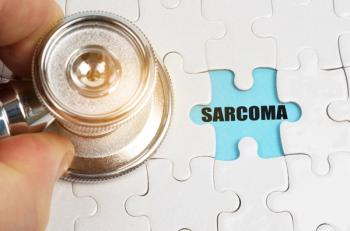
Low-dose drug combination shows better outcomes for myeloma patients
Lenalidomide plus high-dose dexamethasone compared with lenalidomide plus low-dose dexamethasone did not result in superior time to progression, progression-free survival, or overall survival in patients with newly diagnosed myeloma, according to a recent trial.
Key Points
Lenalidomide plus high-dose dexamethasone compared with lenalidomide plus low-dose dexamethasone did not result in superior time to progression, progression-free survival, or overall survival in patients with newly diagnosed myeloma, according to a recent trial. The trial, coordinated by the Eastern Cooperative Oncology Group (ECOG), sought to determine if the efficacy of lenalidomide plus high-dose dexamethasone could be preserved, but toxicity reduced, with a lower dexamethasone dose.
Lenalidomide is an analogue of thalidomide and in previous studies, has shown significant clinical activity in relapsed or refractory myeloma. When used with high-dose plus dexamethasone in patients with newly diagnosed myeloma, lenalidomide showed higher response rates (91%) with lower toxicity than when it was used with thalidomide. Lenalidomide plus high-dose dexamethasone achieved superior results, based on findings of a preliminary randomized trial, to dexamethasone alone in patients with newly diagnosed myeloma.
In the ECOG trial, 445 patients were randomly assigned to treatment protocols. Of these, 223 received lenalidomide plus high-dose dexamethasone and 223, lenalidomide plus low-dose dexamethasone. The mean duration of therapy was 4 months and 6 months in the high-dose and low-dose groups, respectively.
Within the first 4 cycles, disease progression was low in both groups-8 (4%) of 214 patients receiving lenalidomide plus high-dose dexamethasone and 5 (2%) of 208 patients receiving lenalidomide plus low-dose dexamethasone. Five patients from the high-dose group and 15 from the low-dose group who progressed or did not achieve a response were treated with thalidomide plus dexamethasone.
Although overall survival was not a protocol-specified endpoint, the trial was stopped at a median follow-up of 12.5 months because overall survival was significantly higher with low-dose than with high-dose dexamethasone. The overall survival at 1 year was 96% (95% CI 94-99) in the low-dose group compared with 87% (82-92) in the high-dose group. Consequently, all those in the high-dose group were crossed over immediately to the low-dose group.
The 1-year survival rate for patients who were aged less than 65 years was 91% (95% CI 85-87) with high-dose dexamethasone and 98% (92-99) with low-dose dexamethasone. For those 65 years and older, the 1-year survival rate was 83% (76-90) with high-dose dexamethasone and 94% (89-99) with low-dose dexamethasone. At 2 years, the overall survival for the low-dose group and high-dose group was 87% (81-93) and 75% (68-93), respectively.
Grade 3 or higher toxicities were more common in patients receiving high-dose dexamethasone. Fifty-six (27%) of 223 patients in the high-dose group and 37 (19%) of 222 in the low-dose group discontinued therapy due to adverse events. Fifty-seven (26%) of 223 patients in the high-dose group and 27 (12%) of 220 in the low-dose group experienced deep-vein thrombosis (P=.0003); 20 (9%) and 9 (4%) experienced a pulmonary embolism. Infections, including pneumonia were experienced by 35 (16%) of 223 versus 20 (9%) of 220 (P=.04), and fatigue 33 (15%) of 223 versus 20 (9%) of 220 (P=.08), respectively.
Progressive disease was the most common cause of death. It caused 35 (63%) of 56 deaths in the high-dose group and 37 (70%) of 53 deaths in the low-dose group. The other common causes of death were thromboembolic events, which resulted in 5 (9%) deaths in the high-dose group and 1 (2%) in the low-dose group. Infection caused 4 (7%) and 3 (6%) deaths in the high-dose and low-dose groups, respectively; cardiac complications caused 6 (11%) and 2 (4%) deaths in the high-dose and low-dose groups, respectively.
Lenalidomide plus dexamethasone is a good option for pretransplant induction therapy, said researchers. The trial by itself does not establish the efficacy and safety of long-term therapy with low-dose dexamethasone. Researchers note that patients were expected to proceed to autologous stem cell transplantation after 4 cycles of induction. Long-term therapy with low-dose dexamethasone needs to be compared with other active regimens.
SOURCE
Rajkumar SV, Jacobus S, Callander NS, et al. Lenalidomide plus high-dose dexamethasone versus lenalidomide plus low-dose dexamethasone as initial therapy for newly diagnosed multiple myeloma: an open-label randomised controlled trial. Lancet Oncol. 2009;11(1):29-37.
Newsletter
Get the latest industry news, event updates, and more from Managed healthcare Executive.
















































